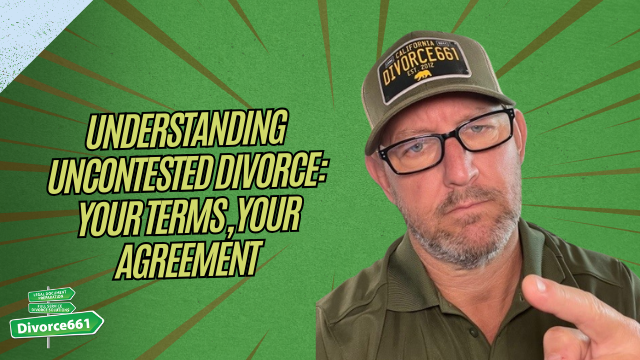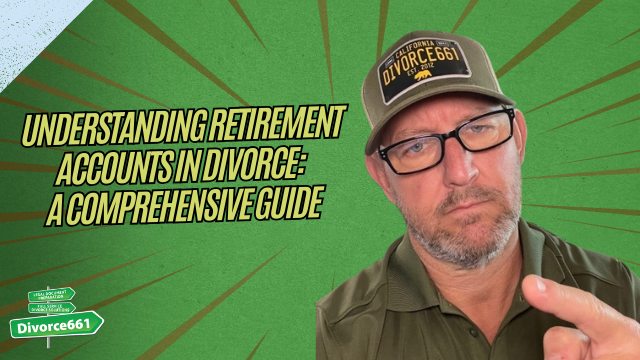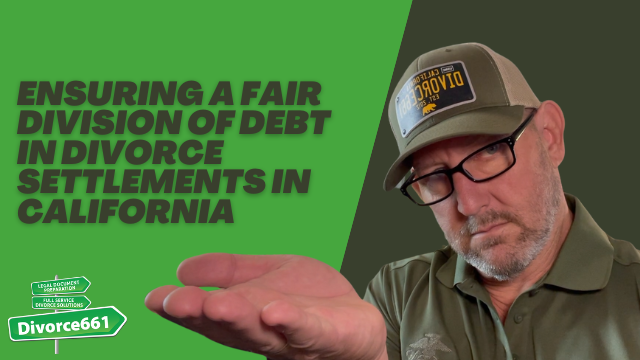How to Keep Divorce Costs Low Without Sacrificing a Good Outcome
Divorce can be a daunting experience, but it doesn’t have to drain your bank account. If you and your spouse find yourselves in agreement, there’s a smarter, more affordable way to navigate the divorce process without compromising on the outcome. Here’s how you can keep your divorce costs low while ensuring that you achieve a satisfactory resolution.
Understanding the Basics of Divorce Costs
Many people assume that a divorce means hiring expensive attorneys and paying hefty legal fees. However, if your case is amicable, you can save a significant amount of money. A large portion of divorce work involves paperwork, which can be managed effectively without the need for a lawyer. This is where legal document assistants, like Divorce661, come into play.
By handling the bulk of the paperwork—filing, disclosures, settlement agreements, and court approval—you can avoid unnecessary costs. The key is to remain focused on the process and to avoid letting small disagreements escalate into larger conflicts, which can quickly escalate costs.
The Cost-Saving Power of Amicable Agreements
The most effective way to save money during a divorce is to avoid conflict. The more you fight, the more you pay. At Divorce661, we specialize in helping couples stay on track and focused on resolution rather than letting emotions dictate the process. This approach not only keeps costs low but also speeds up the timeline for finalizing your divorce.
For instance, we worked with a couple who were quoted over $15,000 by attorneys for a basic divorce. They came to us, paid a flat fee, and had their case finalized in under a month—all without stepping foot in a courtroom. The outcome was the same as what they would have received through traditional legal channels, but at a fraction of the cost.
Flat Fee Divorce Services
At Divorce661, we offer flat-fee, full-service divorce support. This means you know exactly what you’re paying upfront, with no hidden fees or surprises. We ensure that everything is done right the first time, minimizing delays caused by rejected forms or legal missteps.
Keeping costs low doesn’t mean cutting corners. It’s about working with professionals who understand the system and know how to navigate it efficiently. This allows you to move through the process without unnecessary stress or financial strain.
What Services Do You Really Need?
Understanding what services are essential to your divorce can help you avoid unnecessary expenses. Here are some key areas where you might need assistance:
- Filing Paperwork: Properly completing and filing all necessary documents is crucial. Mistakes can lead to delays and additional costs.
- Settlement Agreements: Drafting clear and comprehensive settlement agreements can prevent misunderstandings and conflicts later on.
- Disclosures: Full disclosure of assets and liabilities ensures that both parties are on the same page, which can help avoid disputes.
- Court Approval: Navigating the court system can be complicated, but with the right guidance, you can finalize your divorce without unnecessary appearances.
Real Client Success Story
One of our clients exemplifies how effective our approach can be. They initially sought quotes from traditional attorneys and were shocked to find out they would need to pay $15,000 for a straightforward divorce. They reached out to us, and we were able to handle their entire case for a flat fee, finalizing everything in less than a month. This experience illustrates the potential for significant savings without sacrificing the quality of the outcome.
Finalizing Your Divorce Without Court Appearances
One of the unique benefits of our services at Divorce661 is the ability to finalize your divorce without ever having to set foot in a courtroom. This not only saves you time but also reduces the stress associated with court appearances. We manage all court paperwork and legal drafting on your behalf, allowing you to focus on moving forward with your life.
Why Choose Divorce661?
Here’s why many couples opt for our services:
- Full-Service Support: We handle everything from start to finish, making the process as seamless as possible.
- Flat Fee Structure: With no hidden fees, you’ll know exactly what you’re paying for.
- No Court Stress: We take care of all court-related matters, so you can avoid the anxiety of court appearances.
- Efficient Process: Our experienced team ensures that everything is completed accurately and promptly.
Keeping It Simple and Affordable
If you’re looking for a cost-effective way to navigate your divorce without compromising on results, Divorce661 is here to help. Our goal is to keep the process simple, stress-free, and affordable. We believe that divorce should not be a financial burden, and with our expertise, it doesn’t have to be.
For a free consultation, visit Divorce661.com. Let us help you achieve a positive outcome in your divorce without breaking the bank.
What Are Your Concerns About Divorce Costs?
We understand that many people have concerns about the costs associated with divorce. What worries you the most? Is it the fear of escalating legal fees, the complexity of the process, or something else? Share your thoughts and questions in the comments below. We’re here to provide guidance and support.
In conclusion, navigating a divorce doesn’t have to be an expensive ordeal. By choosing the right approach and utilizing professional services, you can keep costs low while achieving a satisfactory outcome. Remember, the key is to maintain open communication with your spouse and focus on resolution rather than conflict. With the right support, you can move forward confidently and cost-effectively.










